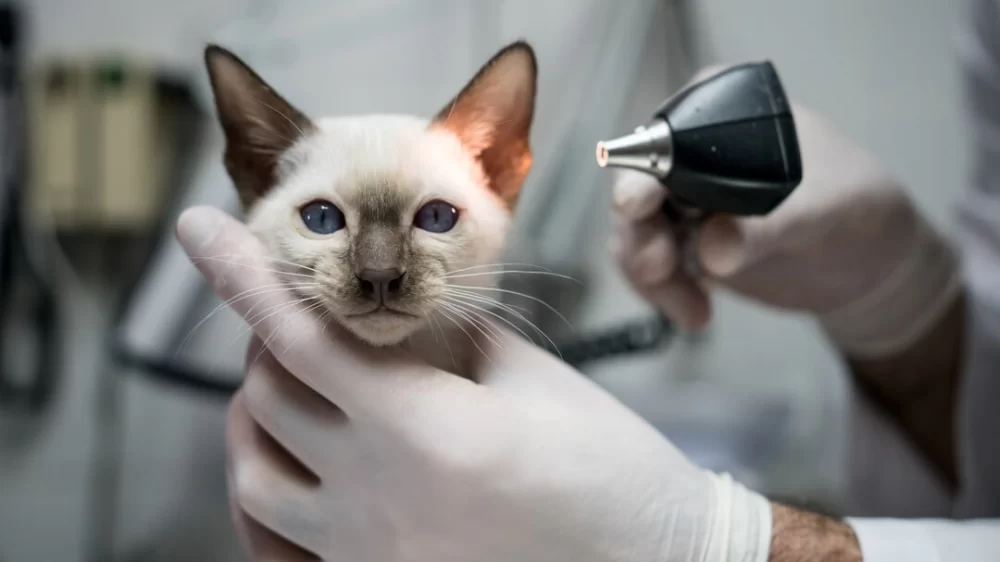Understanding Cat Ear Mites: What You Need to Know
As a cat owner, you might have encountered ear mites, a common yet frustrating issue that can cause discomfort for your furry friend. If you've noticed your cat scratching its ears more than usual or shaking its head excessively, it could be a sign of ear mites. In this article, I'll walk you through everything you need to know about cat ear mites, including how to identify them, treat them, and prevent them from coming back.
What Are Cat Ear Mites?
Cat ear mites, scientifically known as Otodectes cynotis, are tiny parasites that live in the ear canal of cats. These microscopic creatures feed on the oils and waxes in the ears, leading to irritation, itching, and inflammation. While ear mites are most commonly found in cats, they can also affect other animals such as dogs and rabbits. They are highly contagious, so if you have multiple pets in your household, you should act quickly to prevent the spread.
How to Recognize the Signs of Ear Mites in Your Cat
Detecting ear mites early can make the treatment process much easier. Here are some common symptoms to watch out for:
- Excessive scratching or shaking of the head: Cats with ear mites often scratch their ears vigorously or shake their heads frequently due to the irritation caused by the mites.
- Dark, crumbly earwax: One of the most noticeable signs of ear mites is a buildup of dark, waxy discharge in the ears. This discharge may resemble coffee grounds and is a clear indication of mites.
- Inflamed or red ears: If left untreated, ear mites can cause the ear canal to become inflamed, making it red and swollen.
- Strong odor: A foul smell emanating from your cat’s ears could be a sign of infection, which may occur if the mites cause enough damage.
- Behavioral changes: If your cat is in significant discomfort, you may notice changes in their behavior, such as irritability, restlessness, or a decrease in appetite.
Treating Cat Ear Mites: Step-by-Step Guide
Now that you know what ear mites are and how to identify them, let’s dive into how you can treat your cat’s condition. Thankfully, with the right treatment, ear mites are manageable, and your cat can feel comfortable again in no time.
1. Visit Your Veterinarian
While it’s possible to treat ear mites at home, it’s always a good idea to consult with your veterinarian first. Your vet will be able to confirm whether your cat has ear mites and rule out other conditions that might cause similar symptoms. They can also provide the most effective treatment plan, which may include medicated ear drops, oral medications, or injections.
2. Clean Your Cat’s Ears
Before applying any medication, it’s important to clean your cat’s ears thoroughly. Use a cat-safe ear cleaner, which you can find at most pet stores or from your vet. Gently wipe away the dark earwax and debris using a cotton ball or gauze. Be careful not to push anything too deep into the ear canal, as this can cause injury.
3. Apply Medication
There are several options when it comes to treating ear mites. Your veterinarian may prescribe topical treatments, such as ear drops or ointments, designed to kill the mites. Make sure to follow the instructions carefully, and be consistent with the treatment, which typically lasts for several weeks. Some treatments may require you to apply the medication once or twice a day.
4. Treat Other Pets in the Household
Since ear mites are highly contagious, it’s essential to treat all pets in your household, even if they aren’t showing symptoms. This helps prevent the mites from spreading and ensures that all your pets are free from the parasites. Speak with your veterinarian to determine the best course of action for your other animals.
5. Prevent Future Outbreaks
Once the ear mites are treated, you’ll want to take steps to prevent them from returning. Regular ear cleaning is essential for maintaining your cat’s ear health. Additionally, keep your cat’s environment clean and avoid exposing them to other animals that may have ear mites. If your cat is prone to ear infections or infestations, your vet may recommend ongoing preventative care, such as ear drops or medicated wipes.
Home Remedies for Cat Ear Mites
In addition to veterinary treatment, some pet owners prefer using home remedies to help manage ear mites. While these methods may not be as effective as professional treatments, they can provide some relief for your cat. Here are a few options:
1. Olive Oil
Olive oil is a gentle, natural remedy that can help soothe your cat’s irritated ears. It also helps to loosen the debris and earwax caused by the mites. Simply warm a small amount of olive oil (make sure it’s not too hot) and apply a few drops into your cat’s ear. Gently massage the base of the ear to distribute the oil, then use a cotton ball to wipe away the debris.
2. Coconut Oil
Coconut oil has natural antimicrobial properties that may help combat ear mites. Like olive oil, it can be used to soften earwax and soothe irritation. Apply a small amount of coconut oil to a cotton ball and gently wipe your cat’s ears. Be sure not to use too much oil, as it can make the ears greasy.
3. Aloe Vera
Aloe vera is known for its soothing properties and can help reduce inflammation in the ear canal. You can apply a small amount of pure aloe vera gel to a cotton ball and gently clean your cat’s ears. Be sure to use only natural, pure aloe vera without any added chemicals or fragrances.
Final Thoughts on Treating Cat Ear Mites
Cat ear mites are a common issue that every cat owner should be prepared for. While they can be uncomfortable for your pet, with the right treatment and care, ear mites are entirely manageable. Whether you opt for professional veterinary care or home remedies, the most important thing is to address the issue quickly to prevent further discomfort and complications for your furry friend. If you’re ever unsure about your cat’s condition or the best treatment options, don’t hesitate to consult with your veterinarian for expert advice.












